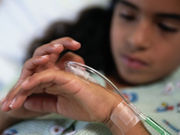Safe sedation needs a systematic approach, including medical supervision, pre-sedation assessment
TUESDAY, June 28, 2016 (HealthDay News) — Guidelines have been updated for monitoring and management of pediatric patients before, during, and after sedation, according to a clinical report published online June 27 in Pediatrics.
Charles J. Coté, M.D., from the American Academy of Pediatrics, and colleagues updated guidelines for delivering safe sedation to children during diagnostic and therapeutic procedures.
The authors note that safe sedation of children requires a systematic approach. This should include the following: no administration of sedating medication without medical/dental supervision; pre-sedation evaluation for underlying medical or surgical conditions that could impact the risk from sedation; fasting for elective procedures and consideration of the risk for those who cannot fast because of the urgent nature of the procedure; and airway examination for those with large tonsils or anatomic airway abnormalities. In addition, the medication’s pharmacokinetic and pharmacodynamic effects and drug interactions should be considered, as well as having appropriate equipment for airway management and venous access, appropriate medications and reversal agents, adequate staff for the procedure and monitoring, and adequate physiologic monitoring during and after sedation. Considerations for after sedation include having a properly equipped recovery area; recovery to pre-sedation levels of consciousness before discharge; and appropriate discharge instructions.
“This report was developed through a collaborative effort of the American Academy of Pediatrics and the American Academy of Pediatric Dentistry to offer pediatric providers updated information and guidance in delivering safe sedation to children,” the authors write.
Full Text
Copyright © 2016 HealthDay. All rights reserved.








